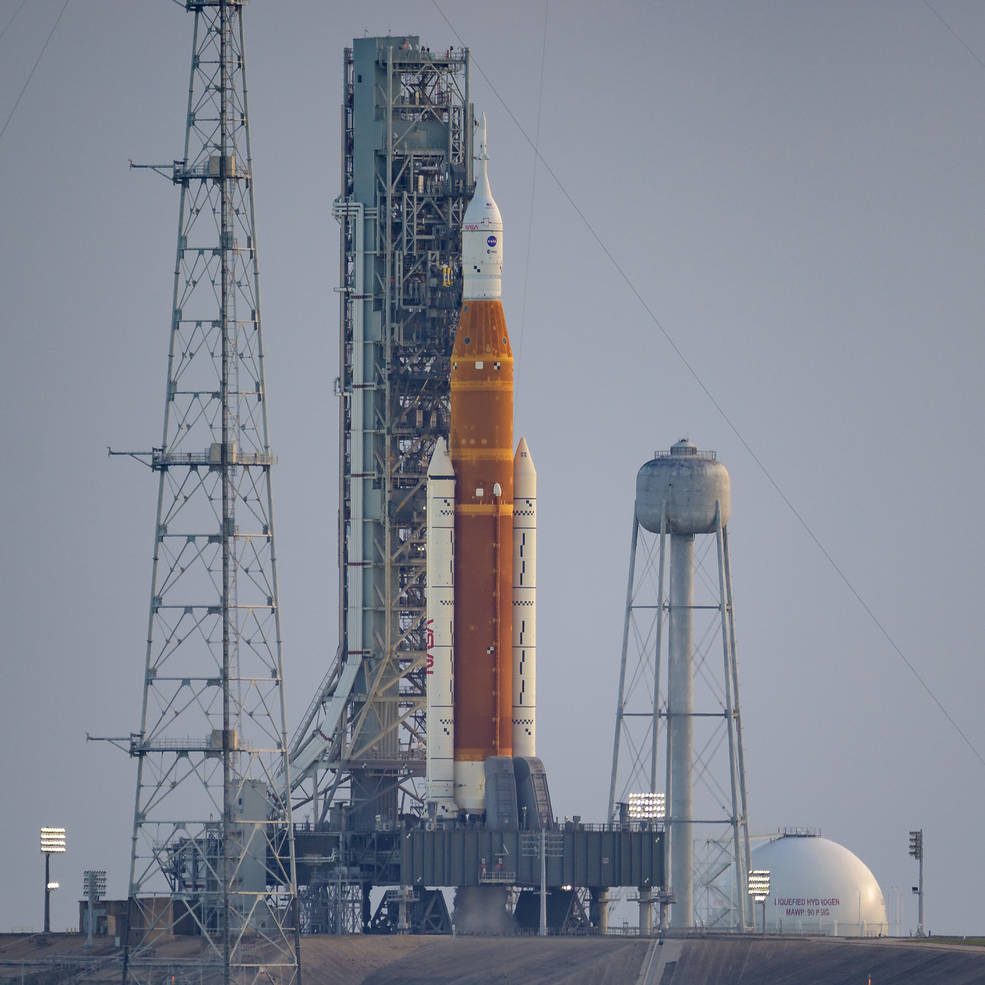Having had its previous launch attempt on 29 August scrubbed by an engine temperature sensor issue, a second attempt to launch the giant SLS rocket carrying the Orion capsule on an uncrewed Artemis I test flight was delayed again on 3 September. This time it was a large hydrogen leak that did the damage.
The launch was supposed to have taken place at 1817 GMT or in the two-hour window afterwards. However, a leak was detected from the seal of the hydrogen propellant line coupling the ground to the core stage. Two attempts were made to fix the seal, firstly by allowing it to warm up before restarting the flow, and then using helium pressurant to try to force it into its seating position. Eventually the decision was made to scrub the launch for a second time after neither technique worked. An earlier hydrogen vent valve leak in a different area was deemed small enough to allow the 29 August original launch attempt to go forward, albeit that the engine-sensor issue later scuppered it. However, this latest launch leak was deemed to create too much of a flammability risk.

The wait goes on: SLS stands forlornly on Pad 39B at the Kennedy Space Center on 3 September. Courtesy: NASA
Update on 22 September 2022: After the fault, it was decided that instead of returning the rocket assembly to the Vehicle Assembly Building (VAB), the change of the suspect seals would be attempted on the pad. This was successfully done and a full propellant tanking and pressurisation test was performed on both main stages on 21 September. The cause of the leak remains mysterious. A “witness” mark on one of the seals suggested that debris might have caused a fluid escape channel, but no debris was ever found. As it was, despite the new seals on the connectors, a hydrogen leak remained. NASA says the hydrogen leak during the pre-pressurisation test on the core-stage fuel tank was in a 4-inch bleed line quick-disconnect fitting. This is a separate line from the 8-inch fill and drain connector that was the original problem. With a detected hydrogen concentration in the pad area of just four per cent, this was within the five per cent limit to attempt a flight. NASA was loath to give up its rescheduled launch on 27 September, given that any further delay would have required a further extension/waiver for the certification of the batteries for the on-board destruct system by the range safety authorities of the US Space Force.
Update on 24 September 2022: Tropical Storm Ian forced NASA’s hand into delaying launch. The 27 September date was given up despite a waiver on the certification of the destruct system’s batteries. NASA was left having to decide whether to send the SLS back into the VAB for its own protection from high winds etc.
Update on 26 September 2022: After Hurricane Ian messed up the latest launch plan, NASA made the decision to roll the SLS assembly back into the VAB for its protection. Thus, late October may be the next possible launch date for Artemis 1. Other sources suggest that November is more likely due to the need to change flight termination system batteries which would have expired.







